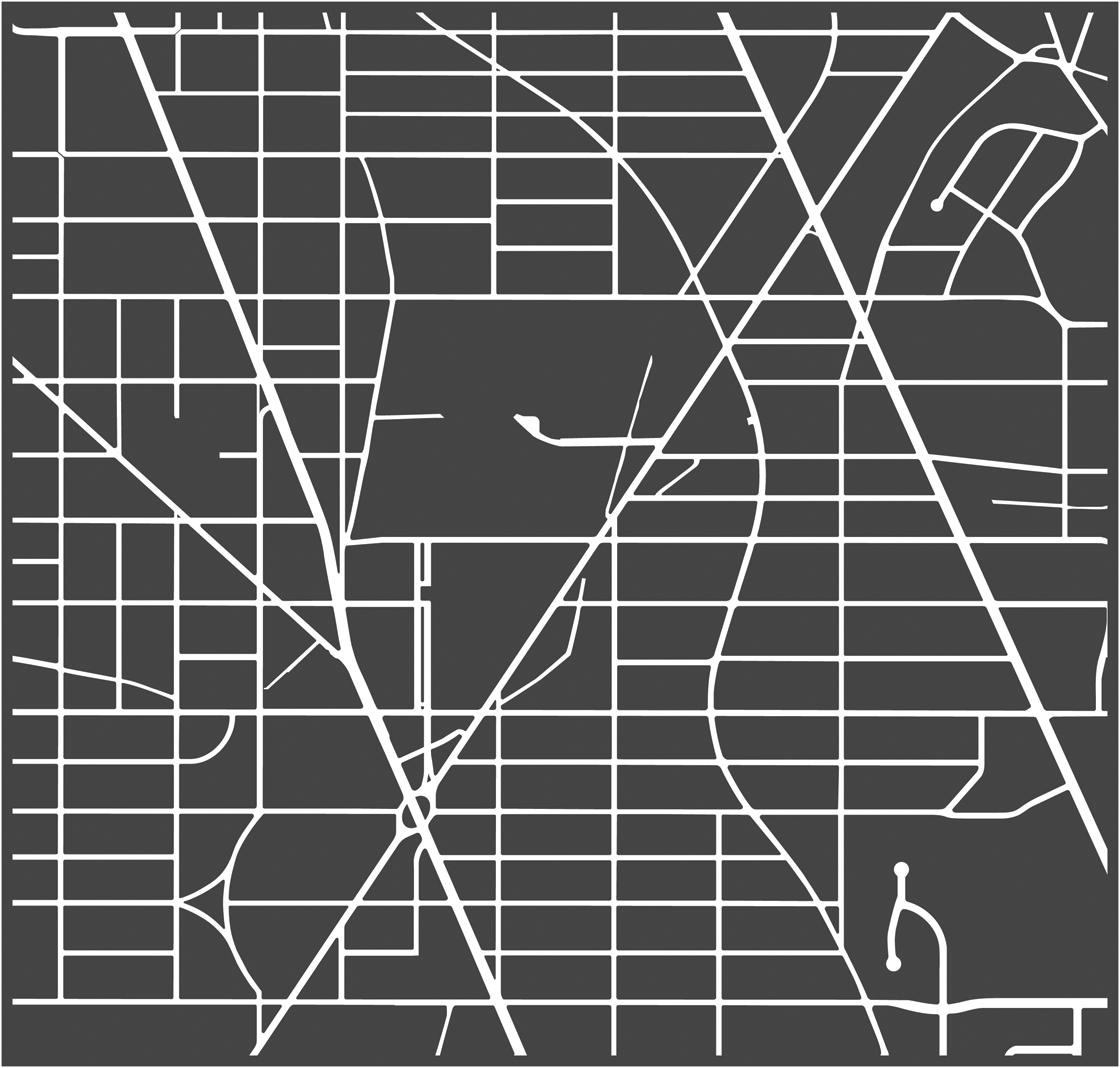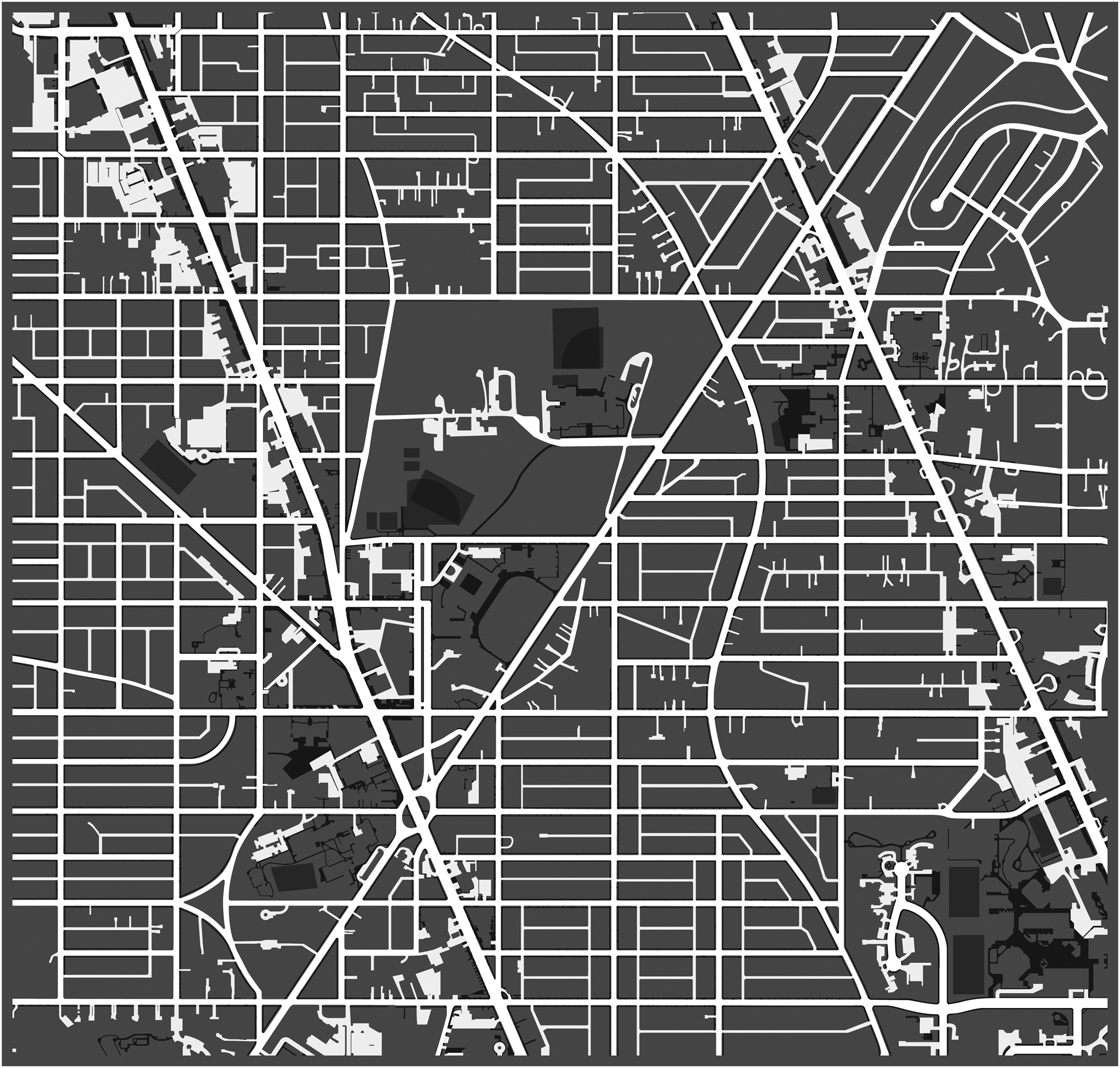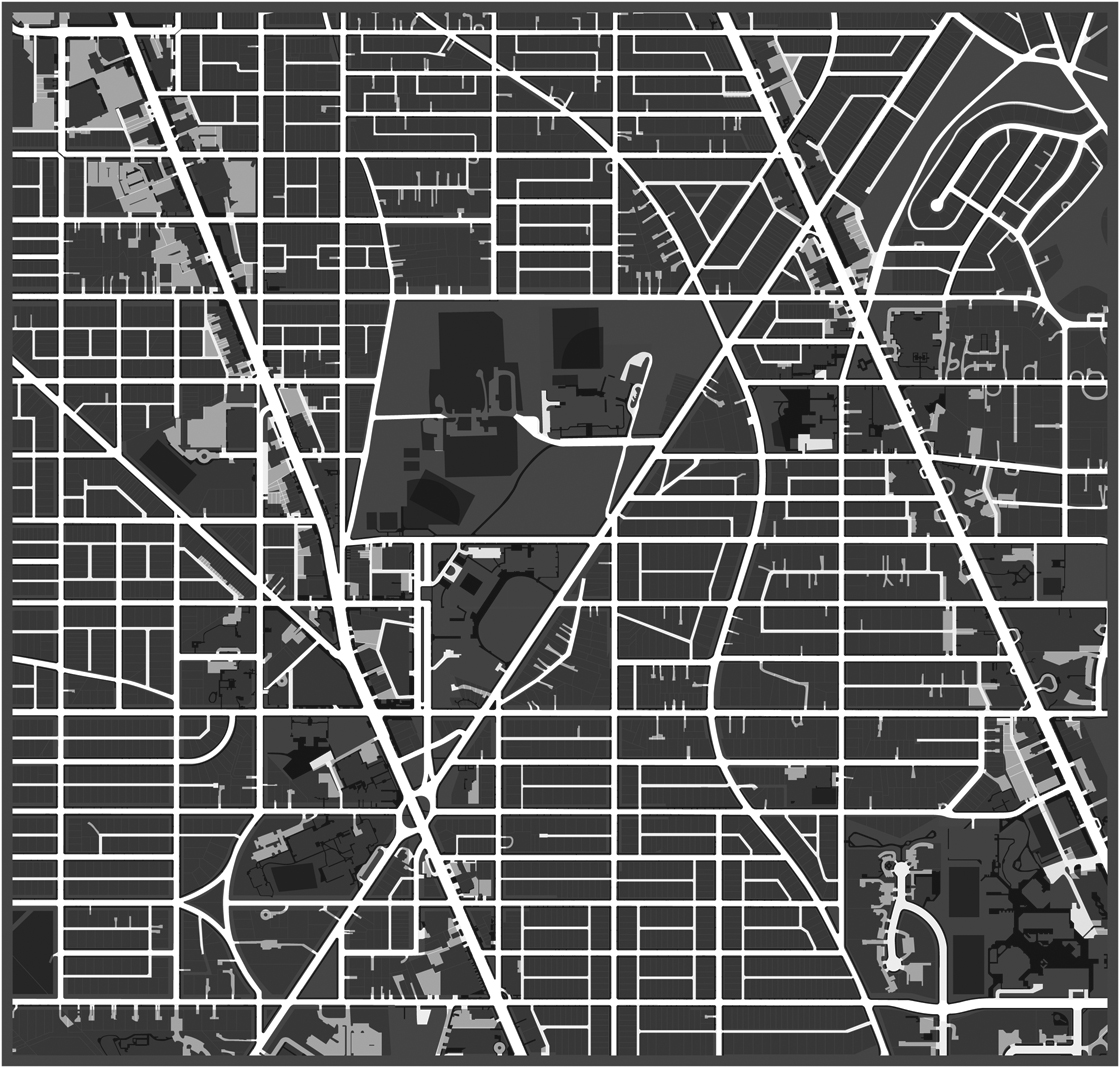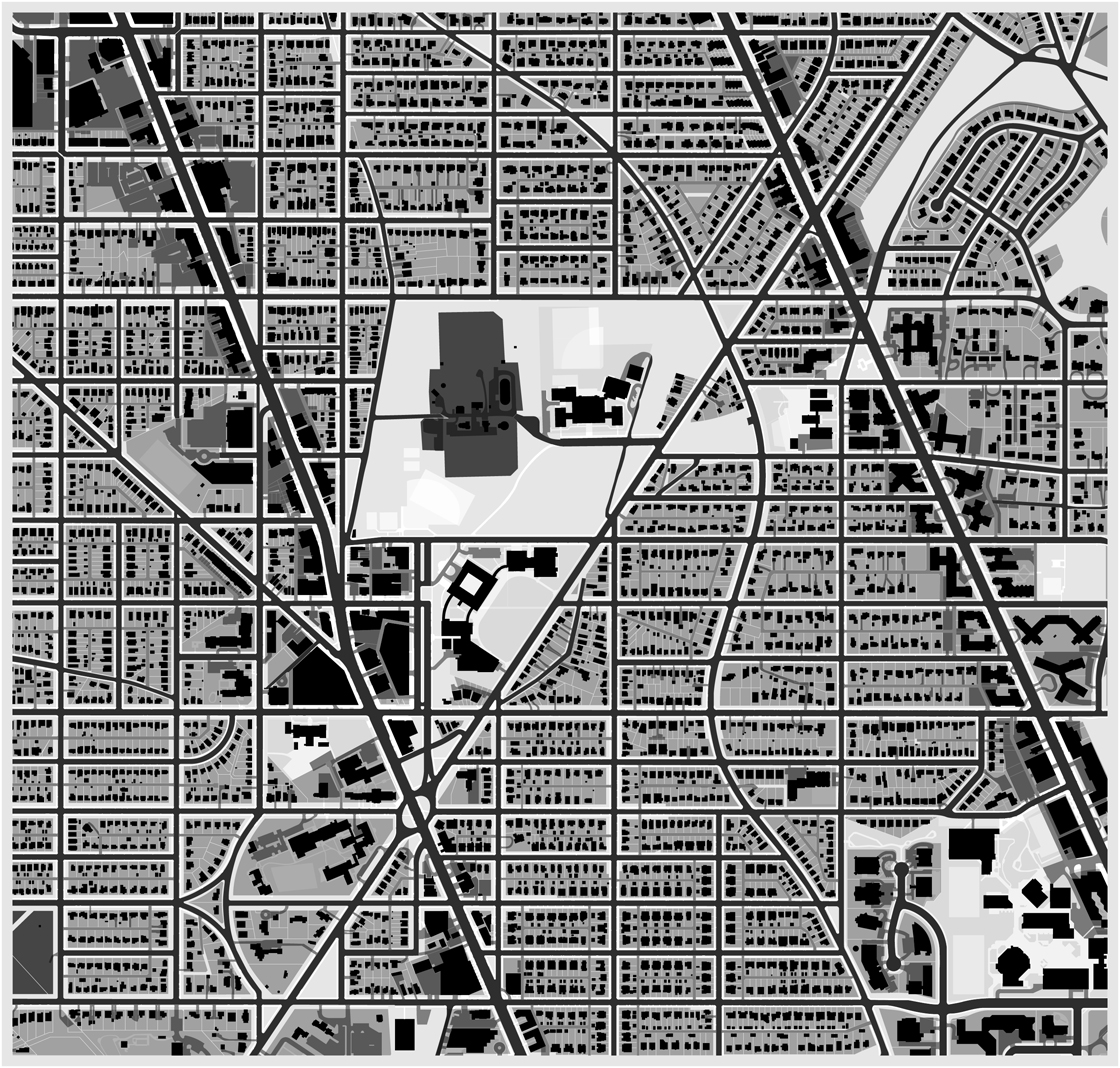In the last two updates, I showed that the disconnect between physical and social boundaries complicates any analysis of the spatial architecture of the Tenleytown-Tobago area. Of course, it’s worth looking at the vehicular perception of space. Starting with grass, which is not so legal, not so wise, but still totally possible in the modern auto-car.
Again, not too much to see here. City streets, though, form the old familiar grid. Clear, legible boundaries for automobiles to follow. Completely drivable.
Alleys are, say, 95% drivable. Although they’re shared space, either by fear or deference, automobiles tend to get precedence in alleys, which are designed for their use, primarily. Although safety in alleys pops up as a common concern, most residents aren’t worried in cars.
The map is still pretty legible and a whole lot more interesting. Now, pedestrian-oriented spaces are definite no-drive zones. Still, you can see into them and physically get on one with a car. Sidewalks are 10% drivable and sports facilities are 30%.
One interesting result of having these no-drive zones is the faint increase in legibility. They reinforce the boundaries of streets and driveways. Even with crosswalks and sidewalk-driveway intersections, the social presumption that driving in a safe, separate space takes precedence. Curbs help too.
So, let’s do property, with the same 20% mobility reduction as in the other drawings.
With the exception of the reservoirs, not too much change. Still, the map just keeps getting more legible. While it’s easier to break down a wall with a car, it’s equally illegal, if not more so. Plus, structures mostly block sight, another boost for separation. So, 0.00%
Now, the buildings still don’t have as much of an effect on the perceived mobility, as the other conditions combined. But compare this map to the pedestrian one, and the ambiguity of space is much less for the driver. There are the roads and the alleys … and every other site is in the less-than-optimal condition. The driver’s city may feel less complex, but it’s also less complicated.







1 thought on “Reno Park Update 091028: Driver’s Perception”